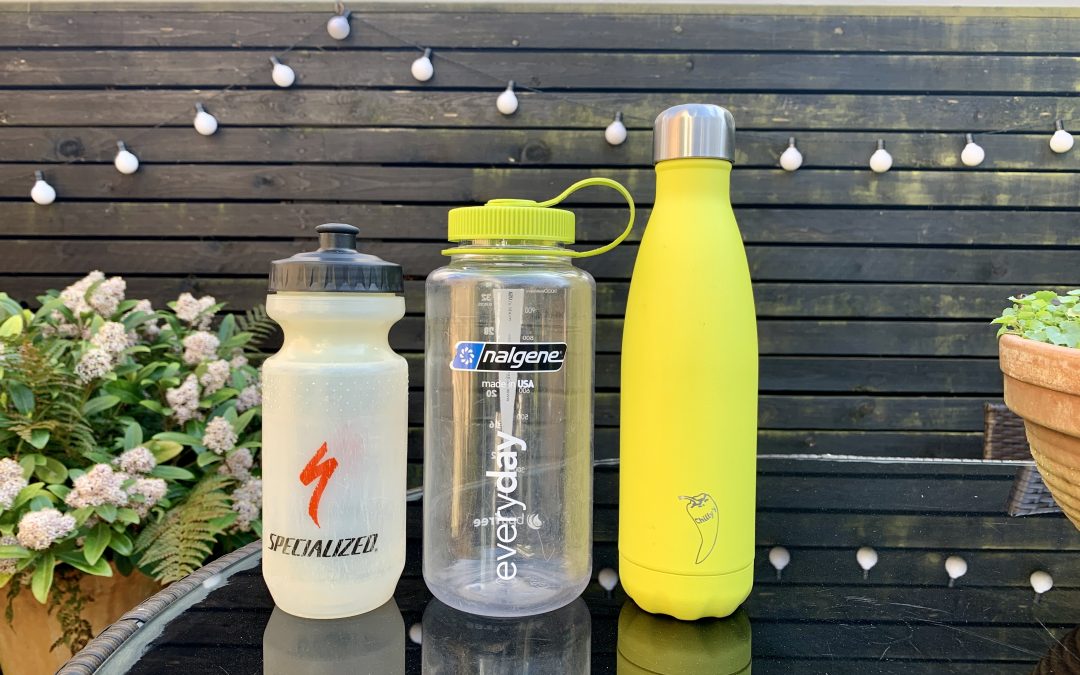Learn how to recycle an old reusable water bottle.
Sustainability and reducing carbon footprints sit at the forefront of our minds. As a result, sustainable products have gained a foothold in the mainstream. Reusable water bottles, for example, are increasingly popular, with the industry worth £10 billion in 2024, and expected to grow at a rate of 5% each year for the next decade.
This bodes well for the turtles. Research suggests that each person who buys a reusable water bottle prevents over 150 single-use plastic bottles from ending up in the ocean per year. Additionally, reusable water bottles are incredibly durable and versatile. We take them everywhere: work, school, university, the gym, the list is endless.
The downside of reusable water bottles…
However, there is a con. Due to their portable nature, reusable water bottles are easily lost! That means a lot of reusable water bottles are sitting, unclaimed, at lost property offices.
Eventually, they need to be disposed of. But how do we do that sustainably? It feels completely wrong to send what is supposedly an eco-friendly product to landfill… So, what do you do with old reusable water bottles when their time is up?
Don’t fear, all is NotLost! We’re here to explain how to get rid of a reusable water bottle, the easy way.
What is your reusable water bottle made from?
What material is my reusable metal water bottle?
How to recycle reusable metal water bottles
What material is my reusable plastic water bottle made from?
How do I recycle my reusable plastic water bottle
What if you can’t find the material of my plastic water bottle?
How to recycle reusable glass water bottles
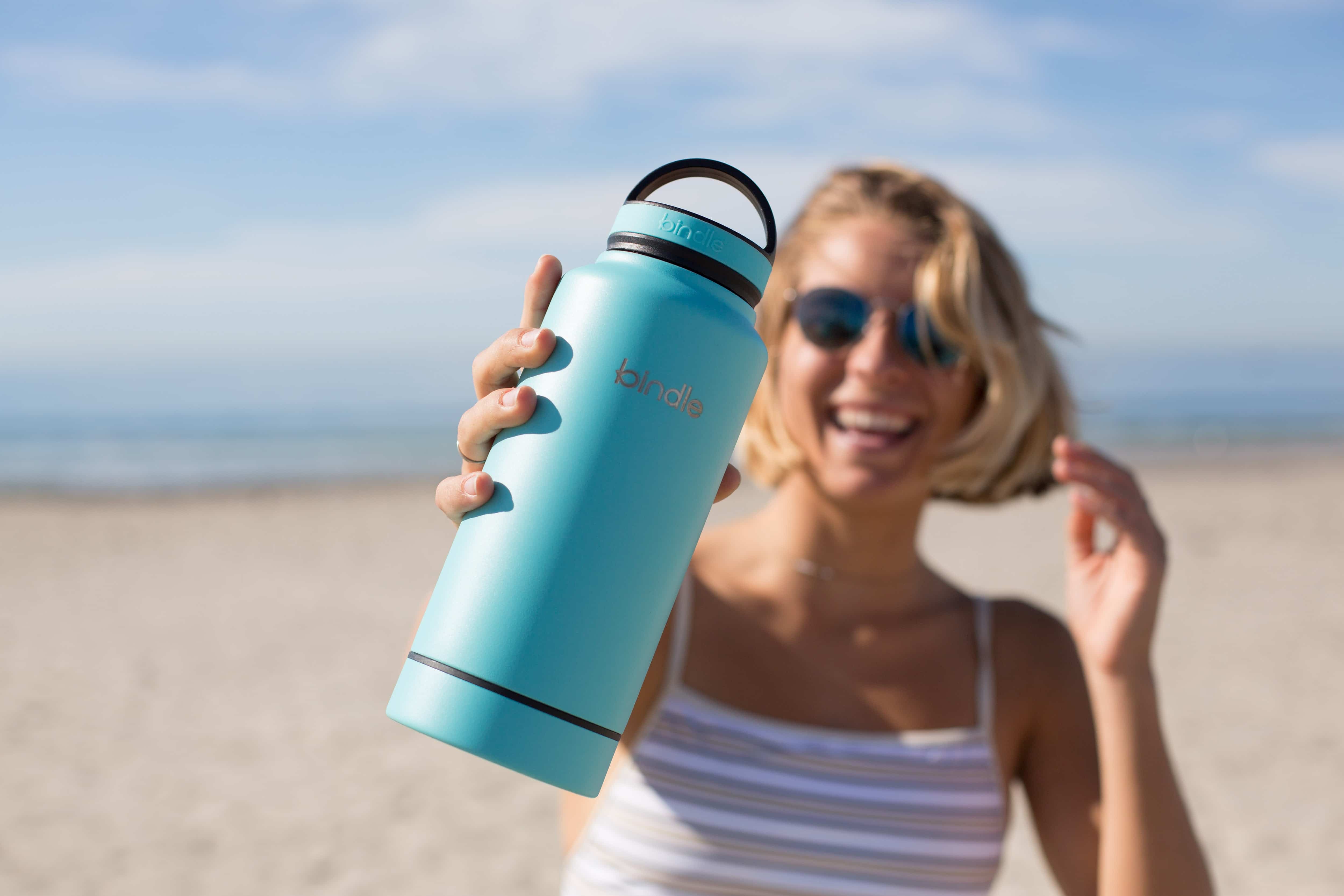
Firstly, what is your reusable water bottle made from?
Before embarking on our recycling adventure, it’s essential to understand the material your reusable water bottle is made of. Naturally, different materials require different recycling methods, with some being completely non-recyclable. If you’re not sure what your bottle is comprised of, you’re in the right place.
The two most commonly used materials for making reusable water bottles are metal and plastic. So, we’ll start there!
What material is my metal water bottle?
Reusable metal water bottles are most commonly made from either stainless steel, which is the more common, or aluminium. But how do you tell which? Firstly, stainless steel is heavier than aluminium (which also makes it more effective for retaining temperature).
However, the added weight may not be obvious and a quick way to tell is to put a magnet next to your water bottle. If it attracts, then it is most likely stainless steel and if not, it’s aluminium.
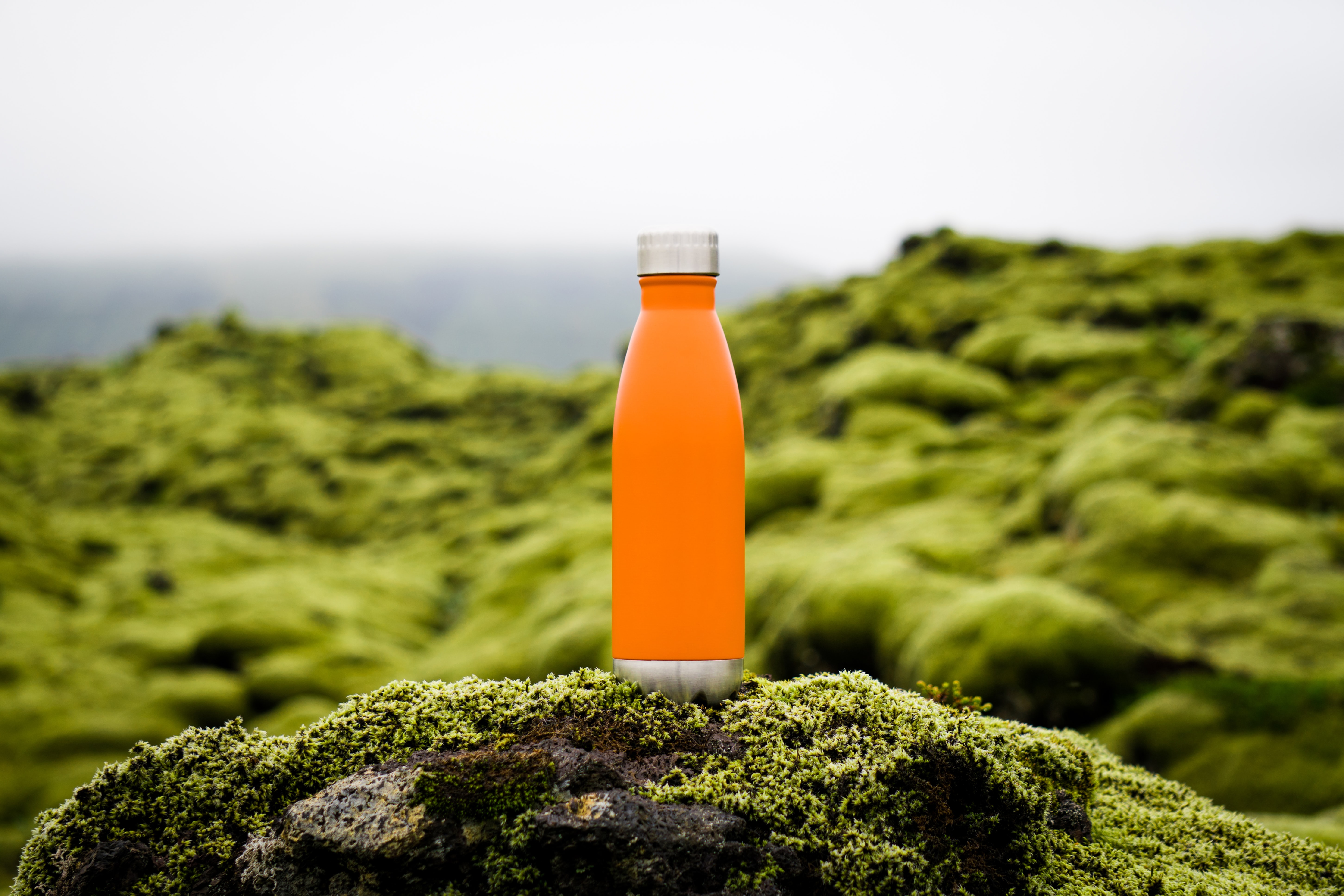
How to recycle a metal water bottle
Both stainless steel and aluminium are recyclable, but not always curbside (meaning via your home recycling bin).
Stainless steel bottles can only be reused and recycled at your local reuse and recycling centre.
Aluminium bottles can sometimes be recycled at home. However, this is not always the case, so it’s generally worth checking on your local council website (you can find your local council by visiting this link and entering your postcode).
So, if your council doesn’t accept curbside aluminium recycling, or you have a stainless steel bottle, you will need to visit a reuse and recycling centre. You can do this by visiting this link and entering your postcode.
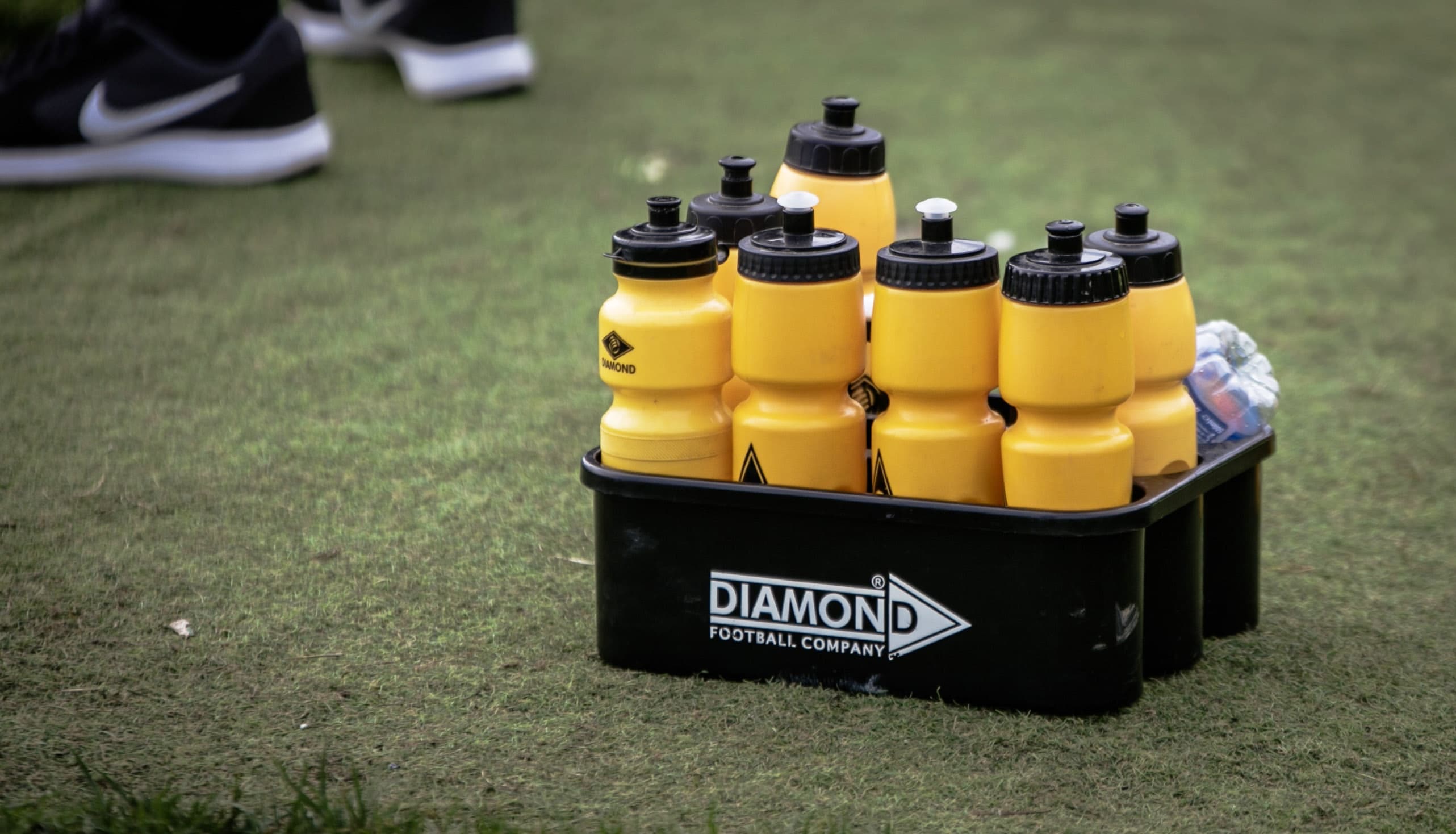
What is my reuable plastic water bottle made from?
Reuseable plastic water bottles are made from different, more durable materials than single-use plastic bottles. These reusable plastic water bottles are commonly used as promotional items for companies and are popular among those involved in sports. As a nation, we collect a lot of these… So when their life is over, what do you do with an old plastic bottle?
Which material is my plastic water bottle made from?
To find this out, look at the base or the side of the bottle. It should include some letters or numbers within a recycling triangle, which indicate certain types of plastic. For example, PET is number 1, HDPE is number 2 and LDPE is number 4.
The full breakdown of the numbers and what they mean is below. Source: Earth Easy.
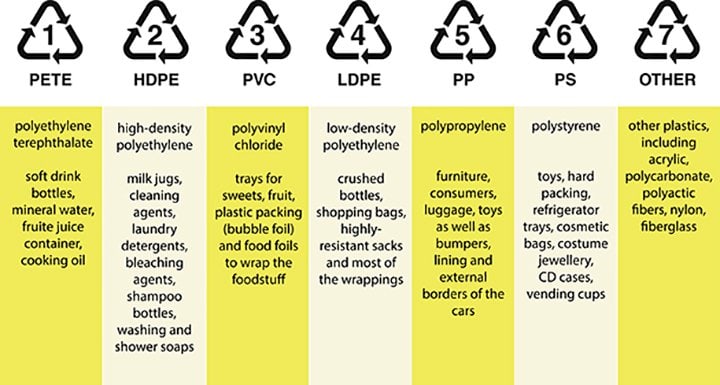
How do I recycle my reusable plastic water bottle?
Generally, reusable plastic bottles will be made from one of four materials, which are recycled differently.
1) high-density polyethylene (HDPE) – Can be recycled at home
2) low-density polyethylene (LDPE) – Can be recycled at specialist points
3) copolyesterr (may be seen as PETE) – Can be recycled at specialist points
4) polypropylene (PP) – Can be recycled at home
For high-density polyethylene (1) and polypropylene (4), we still recommend checking with your local authority to see whether they can be recycled at home. If they can’t, or your bottle is made from low-density polyethylene (2) or copolyester (3), you will need to visit your local reuse and recycling centre, which you can find here.
What if you can’t find the material of my plastic water bottle?
If you can’t find the recycling triangle, we recommend checking the product’s website or contacting the company from which you purchased it. Failing that, there are some distinct physical differences between them.
For example, popolyster and polypropylene are more rigid and hard plastics. HDPE has some flexibility, whereas LDPE is the most flexible and squeezable. If still in doubt, polypropylene is the most likely contender for your reusable plastic bottle.
Other materials for reusable water bottles
Glass water bottles
Some water bottles are made from glass, which makes them more fragile but helps preserve that crisp water flavour we love so much. These can almost always be recycled at home or in bottle banks. One notable exception is if they have been treated to resist high temperatures. In this case, please review the material to understand how best to recycle it. Otherwise, please follow these steps to recycle your glass water bottle:
- Empty and give a quick rinse – leftover liquid can contaminate other recyclables which may mean they aren’t recycled.
- If the lid is made of a recyclable material, pop it back on; if not, dispose accordingly.
- Corks should be removed from bottles before they are recycled but can be home composted.
- At bottle banks, blue glass goes in with green glass.
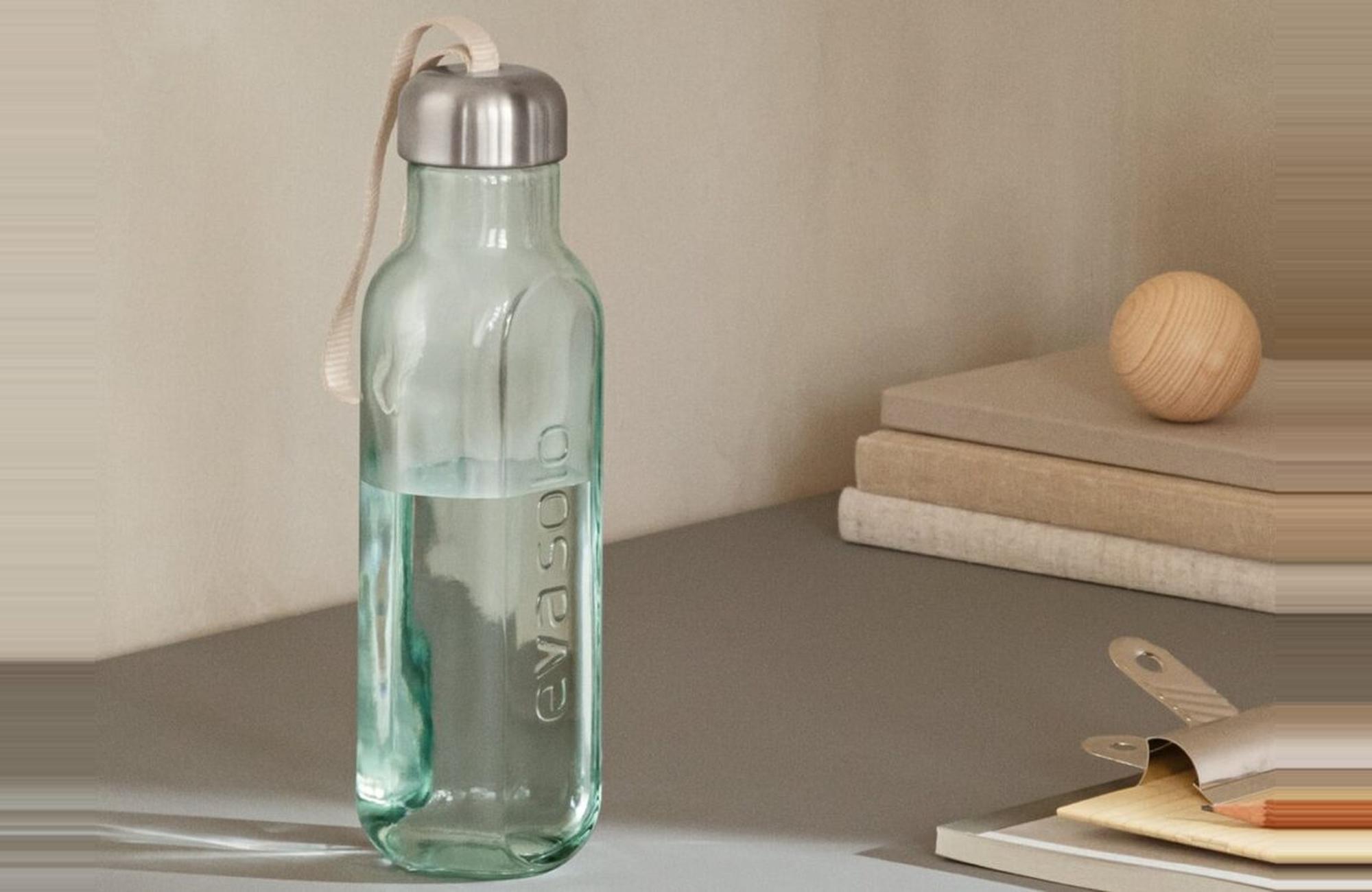
Hybrid Material Bottles
Alongside more common materials, some are made from a hybrid, subsequently making them harder to recycle. Some of these challenges include:
- They may not be accepted by regular recycling plants and need to be taken to specialised scrap metal recyclers. (1)
- They may be difficult to separate the different materials fused together, such as plastic and metal, and end up in landfills. (1)
- They may have low recycling rates due to lack of access, consumer behaviour, or insufficient recycling capacity. (2)
- They may not meet the quality standards or input requirements for recyclers who use advanced technologies. (2)
Sources:
1) http://sustainability.mit.edu/
As a result, companies have been developing ways to allow easier access to recycling solutions for these trickier materials. One of the newest innovations is the UK’s first recycling programme for reusable plastic food containers and water bottles; developed by Sistema and Terracycle. More information can be found here.
What if you don’t know how to recycle your reusable water bottle?
It’s fair to say we’ve tried to help. However, sometimes it’s just not enough. If you’re still unsure how / where to recycle your reusable water bottle, it’s best to follow the steps below.
1) Go to the gov.uk website and fill in your postcode
2) This should give you a link to your local authority/council/borough website.
3) Search the webpage for a section/page dedicated to how different items are recycled
There may be a ‘Recycling A-Z’ – give this a quick scan. Although this list helpfully covers common items, on the other hand, it misses out items such as reusable water bottles.
4) Locate your nearest ‘Reuse and Recycling Centre’ – otherwise known as ‘the dump’ or ‘the tip’
This will be managed by your local council and should have a clear list of items it will take and which it will not. However, it is likely to take your reusable water bottle! Give them a call if you aren’t sure.
5) Take your reusable water bottle down to your local Reuse and Recycling Centre. Dispose of it in the relevant area!
Conclusion
This blog should have given you further understanding about what different reusable water bottles are made of and how you can responsibly dispose of them yourself! It may not be the quickest task, however, it is a very important one. Ensure you run a sustainable business by disposing of your lost property appropriately.
If you want to find out more about NotLost, head to our Solutions page. Or, stay up-to-date by following us on LinkedIn and Twitter.
Recycling reusable water bottle FAQ’s
What is the best way to recycle an old reusable water bottle?
The best way to recycle a reusable water bottle depends on the material. Metal bottles often need to go to a recycling centre, while glass can usually be recycled at home or in bottle banks. Plastic bottles vary in type, so always check the recycling code or contact your local council for guidance.
Can I recycle a stainless steel or aluminium water bottle?
Yes, both stainless steel and aluminium bottles are recyclable. Aluminium bottles may sometimes be accepted in household recycling bins, but stainless steel bottles usually need to be taken to a local recycling centre.
How do I recycle a reusable plastic water bottle?
Reusable plastic bottles are made from strong plastics, such as HDPE, LDPE, PET, or PP. Some can be recycled at home, while others require specialist recycling points or reuse centres. Always check the recycling triangle symbol on your bottle to identify the material.
What if my plastic water bottle doesn’t have a recycling symbol?
If your bottle doesn’t have a recycling code, check the brand’s website or contact the manufacturer. You can also test flexibility – HDPE has some give, LDPE is squeezable, and polypropylene is rigid. If you are still unsure, your local recycling centre can provide advice.
Are glass water bottles recyclable?
Yes, most glass water bottles are fully recyclable at home or at bottle banks. Just rinse them out, remove corks or non-recyclable lids, and sort by colour if required. Heat-resistant glass treated for recycling may require specialist handling.
Can hybrid or mixed-material water bottles be recycled?
Hybrid bottles, made from a combination of materials such as plastic and metal, can be more challenging to recycle. These often need to be taken to specialist facilities, such as scrap metal recyclers or dedicated programmes like Terracycle’s scheme for reusable bottles.
Where can I recycle my reusable water bottle if I’m unsure?
If you’re unsure how to recycle your bottle, check your local council’s website. You can also take it to your nearest Reuse and Recycling Centre, where staff can direct you to the correct disposal area.
Why is it important to recycle old reusable water bottles?
Recycling reusable water bottles prevents waste from going to landfill, reduces environmental impact, and ensures valuable materials like metal, glass, and plastics can be reused. Each recycled bottle contributes to sustainability and lowers your carbon footprint.
